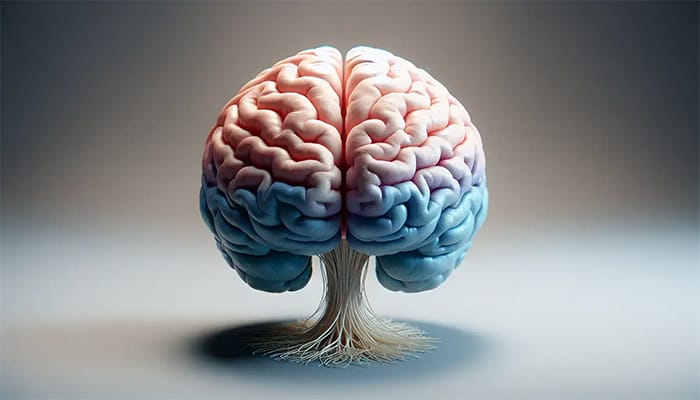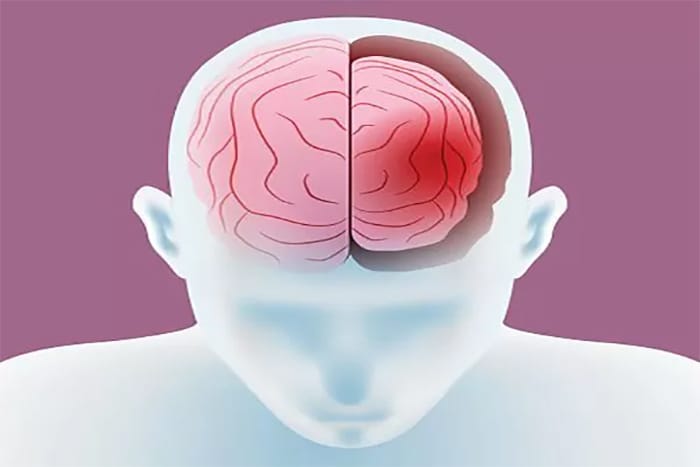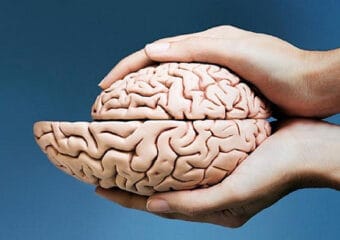
Blog
Lateralization of the brain

Is the lateralization of the human brain related to survival? Has the human brain divided into two parts for a fundamental purpose of survival, or does this division play a decisive role in improving brain function to adapt to the environment? Can we observe a correspondence and harmony between brain divisions and the structure of the environment?
Clearly, symmetry is observable in existence. Examining the body parts of living beings shows that many of their sections are arranged in paired or symmetrical patterns. If we carefully look at nature, we will also observe this symmetry in the workings of the universe and nature.
The brain, with all its complexities, is divided into two parts and follows the rule of symmetry. The brain is divided into different lobes, and within each lobe, there are specific regions responsible for performing particular functions. However, an important point is that the lateralization of brain functions questions this symmetry. This means that all brain functions are assigned to separate regions, rather than the entire brain performing all tasks simultaneously.
فهرست عناوین
ToggleHistory of the discovery of brain lateralization
Brain lateralization as a main neural unit in the organization of the human brain has long been a subject of interest. This phenomenon, as one of the fundamental concepts in neuropsychological studies—especially in Broca’s area—has led to significant advances in this field.
Broca’s area, located in the left frontal lobe, plays a role in language production. Damage to this area causes Broca’s aphasia, a disorder characterized by difficulty in speech production. In 1865, Paul Broca’s research on the brain’s language center brought a fundamental revolution in neuroscience. An interesting point about the language area in the brain is that it operates asymmetrically and, unlike the symmetrical pattern of the body, does not follow the rule of symmetry.
Broca’s investigations showed that individuals with damage to the left frontal area have problems producing language. This finding paved the way for the discovery of asymmetrical brain functions and the development of modern studies in neuroscience.

What is brain lateralization and how does it work?
Lateralization means specialization of brain regions in performing specific tasks independently from each other. Instead of each part of the brain doing all functions simultaneously, specific tasks are divided among different areas.
For example, the left hemisphere hosts language areas like Broca’s and Wernicke’s, while the right hemisphere is more active in functions such as spatial perception and face recognition. This functional division allows the brain to perform tasks more accurately and with greater focus.
The importance of lateralization
Language processing mainly occurs in the left hemisphere, while the right hemisphere has a lesser role in this area. This phenomenon, brain lateralization, has important advantages. One of the most important is increasing the brain’s reaction speed when faced with stimuli.
When functions are divided between brain parts, each area can respond faster and more effectively to its task. In life-threatening situations, this advantage can play a critical role in survival. For example, when talking on the phone on the street, lateralization helps us simultaneously speak on the phone and stay alert to environmental dangers.

The role of evolution in the emergence of an asymmetric brain
A definitive answer to why the brain works asymmetrically is difficult; however, many scientists consider this feature a result of the evolutionary process. The human brain, like other creatures, has acquired lateralization features over millions of years to improve survival and adaptation to the environment.
In emergency conditions, brain lateralization allows each hemisphere to be responsible for a specific task. This division of labor increases the brain’s efficiency and flexibility in complex and critical conditions.
Birds and lateralized brains
Research has shown that birds such as pigeons often use their right eye (and left hemisphere) when eating seeds. When the right eye is covered, their accuracy and reaction speed decrease. This phenomenon shows that brain lateralization has functional advantages not only in humans but also in animals.
Regarding chicks, studies have shown that in the egg, they position themselves so that only one eye receives light. The eye exposed to light becomes dominant after birth and plays a greater role in visual processing and food selection.
In an experiment conducted in darkness, chicks that had not seen light had problems facing dangers and choosing food. This difference demonstrates the importance of lateralization and prenatal light exposure in growth and survival.
Brain lateralization: a way to survive in a symmetrical world
In a world dominated by principles of symmetry, brain lateralization as an asymmetrical phenomenon is not only scientifically fascinating but also plays a key role in survival, environmental adaptation, and enhancing mental efficiency.
Studying brain lateralization not only expands our understanding of brain function but also reflects the amazing adaptation of living beings to environmental needs through evolution.
برای مشاوره رایگان و رزرو وقت (یا اگر تماس گرفتید و قادر به پاسخگویی نبودیم) شماره تماس خود را وارد کنید. ما به زودی با شما تماس می گیریم!



